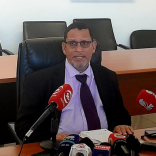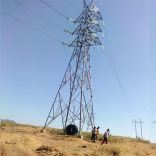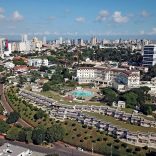Mozambique: LAM wet-leases A319 from Ukraine
A million Mozambicans already have have digital television – Watch

Photo: Miramar
At least a million viewers already benefit from a digital television signal in Mozambique, according to Victor Mbebe, chairperson of TMT, the publicly owned company that operates the digital TV network.
Some of those who receive a digital signal pay for it through a variety of television and internet distribution companies, while others benefit from TMT’s open signal platform, through which Mozambican TV channels can be accessed free of charge.
Mbebe said that TMT has to date distributed 110,000 decoders, and a further 300,000 are available and should be distributed by the end of 2021. A decoder costs 1,200 meticais (about 17 US dollars, at current exchange rates). Once the decoder is installed, there are no further costs – at least, if the viewer only wants to watch Mozambican channels.
“The difference between TMT and the other operators”, said Mbebe, “is that ours is an open signal platform that allows viewers access to all Mozambican channels free of charge. Currently 18 Mozambican channels are available on the TMT platform.”
Mbebe was speaking to reporters in the central city of Beira, where President Filipe Nyusi switched on the digital television signal and inaugurated the Sofala Provincial Television Centre, owned by the public TV station, TVM.
The centre consists of a transmission network with 60 transmitters; the rehabilitation and equipping of the TVM studios; and the TVM production centre and the headquarters of TMT. There is also a generator and a fuel tank that can hold 2,000 litres of diesel. This is enough to provide the centre with electricity for ten days.

Prior to digitalisation, the public network consisted of 50 transmitters, some owned by TVM, and some by the government’s Mass Communications Institute (ICS). Since these were small transmitters, the network could only cover 50 per cent of the Mozambican population.
With the new network, with 60 far more powerful transmitters, the digital signal could now reach 70 per cent of the population.












Leave a Reply
Be the First to Comment!
You must be logged in to post a comment.
You must be logged in to post a comment.